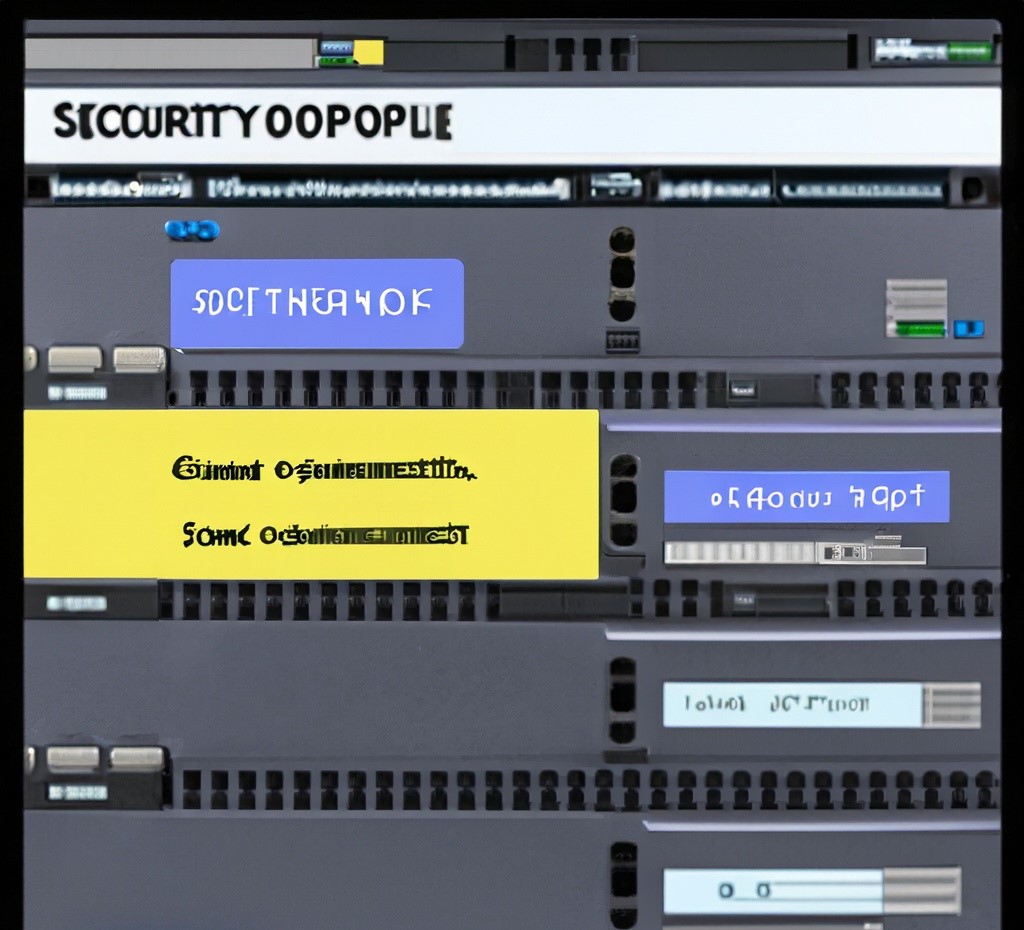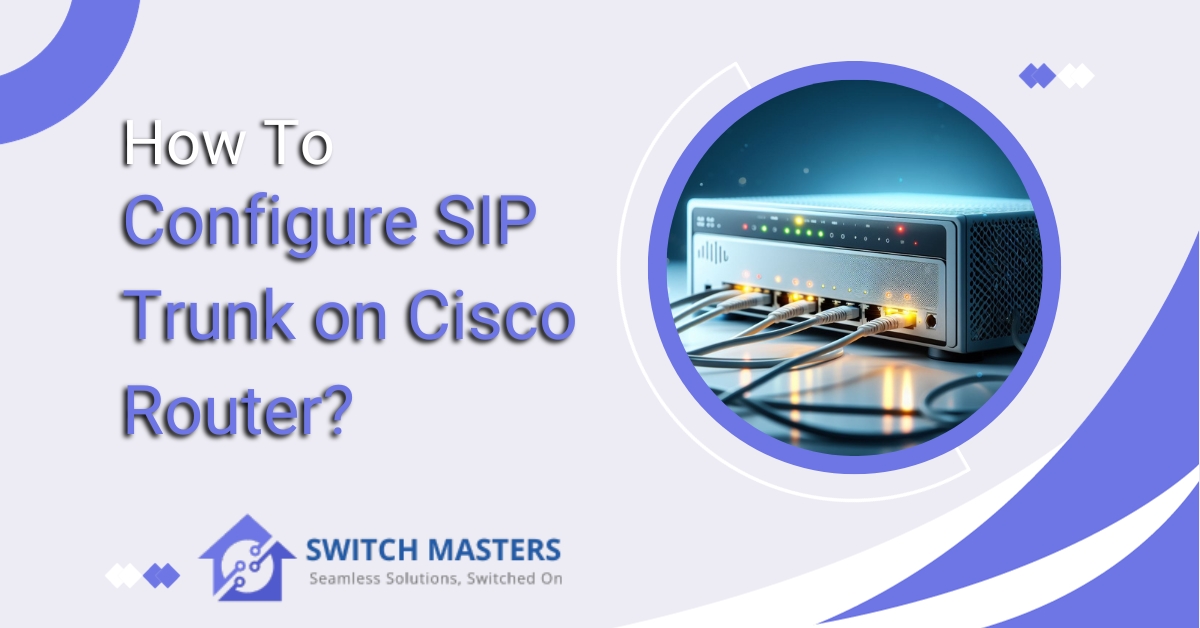Unlock seamless communication with our step-by-step guide on how to configure SIP Trunk on Cisco Router. Streamline your network for crystal-clear voice and video calls effortlessly!
Introduction
Setting up an SIP trunk on a Cisco Router is a critical step to achieving seamless connectivity in a fast-evolving world of modern communication. The comprehensive guide is designed to demystify the configuration process, enabling even those with no prior networking experience to configure their networks with confidence.
Achieving the full potential of your Cisco Router will empower you to leverage efficient voice and video communication, whether you are a small business owner or an IT professional. To unlock streamlined, reliable connectivity, let’s delve into the intricacies of SIP Trunk configuration.
Understanding SIP Trunking
By leveraging the power of the internet, SIP Trunking is a cornerstone of modern communication. It revolutionizes the way businesses handle voice communications. In this context, SIP, also known as Session Initiation Protocol, is a signalling protocol that allows video, voice, messaging, and other communications applications and services to be initiated, maintained, modified, and terminated in real-time.
What is an SIP Trunk?

A SIP Trunk is essentially a virtual connection that enables Voice over Internet Protocol (VoIP) between a private branch exchange (PBX) and an Internet Telephony Service Provider (ITSP). By using the Internet as the bridge, businesses are able to make and receive calls over the Internet rather than through traditional telephone lines.
Benefits of SIP Trunking
Implementing SIP Trunking offers a plethora of advantages:
- Cost-Efficiency: By transmitting calls over the internet, businesses can significantly reduce long-distance and international calling costs.
- Scalability: SIP Trunks are highly scalable, allowing businesses to easily add or remove channels as per their needs.
- Enhanced Communication: It provides high-quality voice and video calls, often surpassing the quality of traditional phone lines.
- Geographical Flexibility: SIP Trunking liberates businesses from geographical restrictions, enabling them to establish a local presence anywhere.
- Disaster Recovery: It offers robust disaster recovery options, ensuring that communication remains uninterrupted even in emergencies.
How To Configure SIP Trunk on Cisco Router?
Configuration Prerequisites
SIP Trunk Configuration Prerequisites
It is important to ensure that you have all the necessary prerequisites in place before beginning the configuration process:
- Network Topology Planning: Ensure that you have a thorough understanding of how your trunk connections will be structured in your network topology.
- Device Understanding: Make sure you become familiar with the devices that you intend to connect your trunks to. Understanding how they implement SIP is essential. If needed, apply a SIP normalization script to the devices.
- SIP Profile Setup: Configure SIP profiles for your trunks. This step is essential for seamless operation of your SIP trunks.
SIP Normalization and Transparency Configuration Task Flow
To guarantee optimal performance, follow these steps:
- Step 1: Configure SIP Trunk Security Profile
- Step 2: Configure Common Device Configuration
- Step 3: Configure SIP Trunks
Step 1: Configuring SIP Trunk Security Profile
To ensure the security of your SIP trunks, you must configure a SIP Trunk Security Profile. This profile contains essential security settings including digest authentication and TLS signaling encryption. SIP trunks adopt the security settings specified in this profile when it is assigned to them.

Note: Cisco Unified Communications Manager will apply a default nonsecure profile if no SIP trunk security profile is assigned.
Procedure
Step 1
- Select Cisco Unified CM Administration from the menu.
- The SIP Trunk Security Profile can be found under System > Security.
Step 2
- Click on “Add New”.
Step 3 (Enabling SIP Signaling Encryption with TLS)
- Choose “Encrypted” from the drop-down menu for Device Security Mode.
- Incoming and outgoing transport types should be configured with TLS.
- Enter the X.509 Subject Name in the designated field. The subject name of the X.509 certificate should match this field.
- You can specify the Incoming Port for TLS requests. The default Incoming Port for TLS is 5061.
Step 4 (Enabling Digest Authentication)
- The “Enable Digest Authentication” box should be checked.
- Nonce Validity Timer: This value indicates the number of seconds before a new nonce is generated. The default value is 600 seconds (10 minutes).
- Check the “Enable Application Level Authorization” box to enable digest authentication for applications.
Step 5
- If any additional fields need to be filled out in the SIP Trunk Security Profile Configuration window, please refer to the Online Help for details.
Step 6
- Click “Save” to preserve your settings.
Note: Remember, it’s crucial to assign this profile to a trunk in the Trunk Configuration window. This ensures that the trunk utilizes the specified security settings.
The following steps will help you set up a robust security framework for your SIP trunks, ensuring that your communication infrastructure is protected in a secure manner.
Step 2: Configuring Common Device Configuration
The configuration of a common device includes a set of optional user-specific feature attributes. This configuration is instrumental in assigning IPv6 preferences for SIP trunks or SCCP phones in an IPv6 deployment.

Procedure
Step 1
- Navigate to the Cisco Unified CM Administration page.
- Choose Device > Device Settings > Common Device Configuration.
Step 2
- Click on “Add New”.
Step 3 (Selecting IP Addressing Mode)
Choose a value from the IP Addressing Mode drop-down menu for SIP trunks, SIP phones, or SCCP phones:
- Both media and signalling are carried out exclusively over IPv4 addresses.
- IPv6 Only: Both media and signalling are carried out via IPv6 addresses exclusively.
- IPv4 and IPv6 (Default): Using the available IP address type, the device operates as a dual-stack device. When both IP address types are configured on the device, the IP Addressing Mode Preference for Signaling enterprise parameter setting will be used for signalling, and the IP Addressing Mode Preference for Media enterprise parameter setting will be used for media.
Step 4 (Configuring IP Addressing Mode for Signaling)
From the drop-down list, select IPv6 as the IP addressing preference for Signaling if you configured IPv6 in the previous step:
- IPv4: During signalling, the dual-stack device prioritizes IPv4 addresses.
- IPv6: For signalling, the dual-stack device prefers IPv6 addresses.
- Use System Default: As a result, the device adopts the settings specified in the IP Addressing Mode Preference for Signaling enterprise parameter.
Step 5
- You will need to complete the remaining fields in the Common Device Configuration window. For detailed information on these fields and their configuration options, please refer to the system’s online help.
Step 6
- To save your configuration, click “Save”.
Using these steps, you can configure the common device settings efficiently, ensuring that your SIP trunks and SCCP phones operate seamlessly within an IPv6 environment.
Step 3: Configuring SIP Trunks
The following steps will assist you in setting up a SIP trunk. You can assign up to 16 destination addresses to a SIP trunk.

Procedure
Step 1
- Select Cisco Unified CM Administration from the menu.
- Select Device > Trunk from the menu.
Step 2
- Click “Add New”.
Step 3
- The Trunk Type drop-down menu should be set to “SIP Trunk”.
Step 4
Choose the type of SIP trunk that aligns with your deployment from the Protocol Type drop-down menu. Click “Next”. Options include:
- The default setting is None
- Discovery of call control information
- Mobility extension across clusters
- Media Engine for Cisco Intercompany
- Control of IP Multimedia Systems
Step 5 (Optional)
- Please select the configuration from the drop-down list if you wish to apply a Common Device Configuration to this trunk.
Step 6
- If you wish to permit encrypted media over the trunk, check the “SRTP Allowed” box.
Step 7
- You can enable the trunk for all cluster nodes by checking the “Run on All Active Unified CM Nodes” box.
Step 8 (Configuring Destination Address)
- Enter the IPv4 address, fully qualified domain name, or DNS SRV record for the server or endpoint you wish to connect to the trunk in the “Destination Address” text box.
- The “Destination Address IPv6” text box should be filled in with the IPv6 address, fully qualified domain name, or DNS SRV record for dual-stack trunks.
- Check the “Destination Address is an SRV” box if the destination is a DNS SRV record.
- By clicking the (+) button, you can add additional destinations.
Step 9
- Select a security profile from the drop-down menu. If left unchecked, a nonsecure profile will be assigned.
Step 10
- A SIP profile can be selected from the drop-down list of SIP profiles.
Step 11 (Optional)
- Select a normalization script from the Normalization Script drop-down list if you wish to assign it to this SIP trunk.
Step 12
- You can configure any additional fields in the Trunk Configuration window. For detailed information on these fields and their configuration options, please refer to the Online Help.
Step 13
- You can finalize your configuration by clicking “Save”.
Having followed these steps, you will be able to successfully configure your SIP trunk, ensuring seamless communication within your organization.
FAQ’s
How do I create a trunk port on my Cisco router?
It is necessary to create a corresponding sub-interface for each VLAN configured on our switch in order to establish a trunk link with it. Following the creation of the sub-interface, we assign the sub-interface an IP address, specify the sub-interface’s encapsulation type as 802.1q, as well as specify the VLAN to which it belongs.
How do I connect my SIP trunk to my PBX?
Click on “Add” under Settings > PBX > Trunks. Choose “ITSP” from the Template drop-down menu, “United States” from the Country drop-down menu, and “SIPTRUNK” from the ITSP drop-down menu to facilitate easy identification of this SIP trunk. Provide a name for this SIP trunk to facilitate easy identification. Select SIP as the Protocol.
Can I create my own SIP trunk?
You have the capability of configuring a SIP trunk independently. In order to establish a cloud SIP service, you must possess a VOIP gateway or a PBX. However, you will only be able to achieve this if you possess a VOIP gateway or a PBX. Ensure that your PBX is compatible with SIP in order to ensure success.
What is the VLAN for the trunk port?
The trunk port facilitates the bi-directional flow of traffic across all VLANs by default. All VLAN IDs are allowed, ranging from 1 to 4094. Nevertheless, it is possible to exclude specific VLANs from this list, effectively blocking traffic from those particular VLANs from traversing the trunk.
Does a trunk port need an IP address?
For each VLAN on the trunk, the router must be configured with an IP address and corresponding subnet mask.
Conclusion
SIP Trunks have revolutionized the way businesses communicate. With their plethora of features, security options, and support for future technologies like IPv6, they are indeed a game-changer. The Cisco Unified Communications Manager, with its robust features and configurations, ensures that businesses can leverage the full potential of SIP Trunks, ensuring efficient, secure, and future-ready communication.















